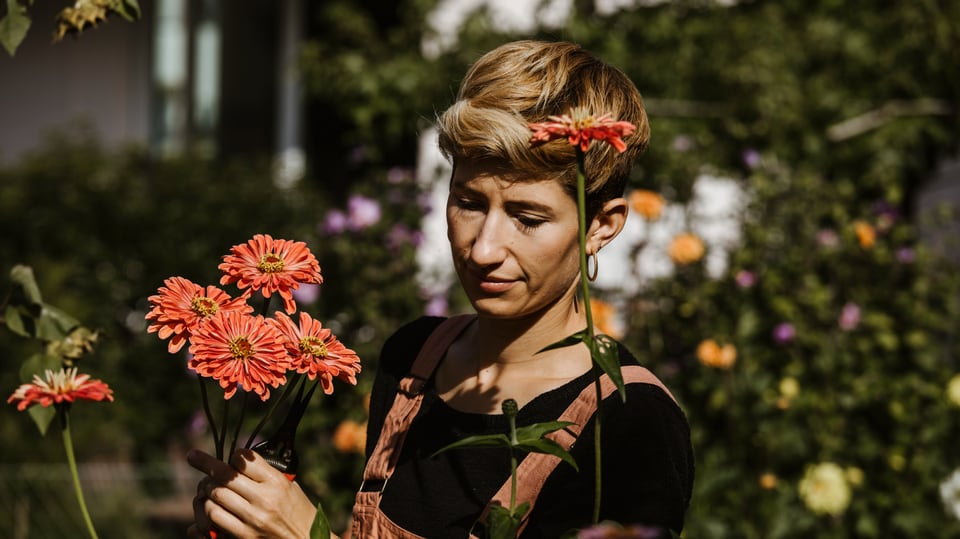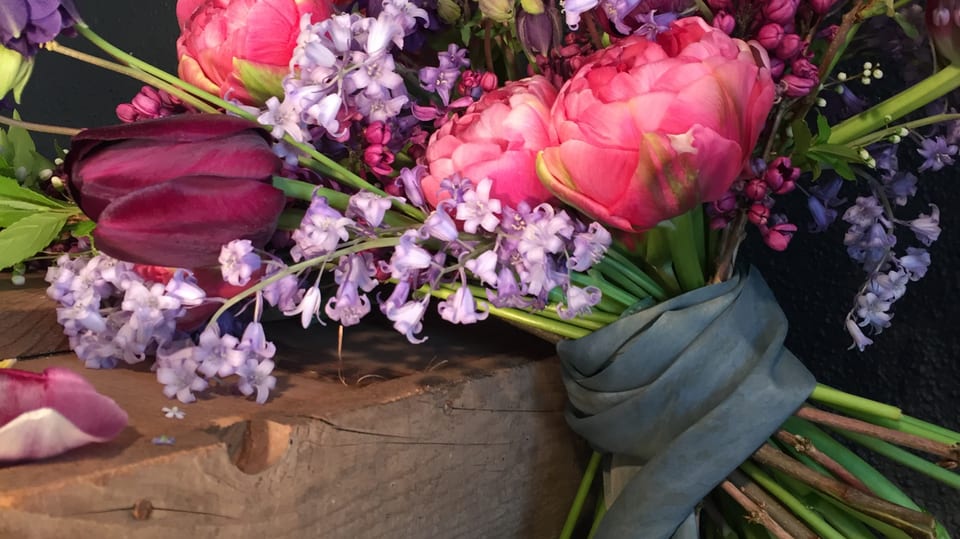Contents
From patrol officer to Slowflower activist: Visiting Maja Bartholet’s naturally beautiful garden.
Maja Bartholet’s flower paradise is in the middle of Zurich-Seebach. Over 50 types of flowers grow on a piece of land surrounded by houses. Wild and non-toxic. There are also rarities like the pink lily of the valley.
“Such a rare variety, I always think that’s great,” says Maja Bartholet happily. As a patrol officer, she sometimes had difficult conversations with traffic offenders. Today she sometimes talks to her flowers. She found the so-called Slowflower movement by accident a few years ago.
Legend:
First an online course, then workshops, “1000 books” and learning-by-doing: This is how Maja Bartholet developed her knowledge of flowers.
Stephanie Wittmer
“One fall, when I wanted to buy flowers for myself, I couldn’t find anything.” The range of cultivated flowers in the same, unimaginative arrangements did not convince her. At the same time, she came across a representative of the Slowflower scene in the USA on Instagram. «This wealth of colors, the seasonality, that fascinated me.»
Maja Bartholet booked an online course and worked her way through what felt like 1000 books. She networked with like-minded people. She learned a lot by trying things out. Six years ago she founded her company «Fleuraissance». Today she offers flowers from her garden from March to October. One hit, for example, is their zinia.

Legend:
Zinien grows Maja Bartholet in different colors. They grow mainly in midsummer.
Stephanie Wittmer
Because of the rainy weather, the garden is not as colorful as usual in May. Tulips and daffodils have faded, purple bluebells, green fennel and dark red peonies are growing in a bed. None of their flowers have ever seen anything other than compost, horn shavings, or sheep’s wool pellets.
I want my daughter to see the world as worth living in as we do.
That works, says Maja Bartholet. “I firmly believe that if the soil can live, then the plants in it can live too.” But it also means that you have to be able to cope with failures. Sometimes there are many bugs in their garden, sometimes more snails. “But I’ve never had a total failure.”

Legend:
There are no red roses in Maja Bartholet’s spring bouquets. They are natural bouquets with seasonal flowers: Currently, for example, peonies or hyacinths.
Maya Bartholet
An intact nature is much more important to her than quick success. Also with regard to her three-year-old daughter. “I want my daughter to be able to grow up in a world that she still finds just as worth living in as we do.” She wants to do her best for that.
Industry and consumers should rethink
Today, most cut flowers in Switzerland come from far away. 80 percent come from countries such as Kenya, Colombia or Ecuador. They are raised on farms using fertilizer and pesticides. The working conditions of the employees are often miserable and the wages are bad. The prices in this country, criticizes Maja Bartholet, are much too low. “Actually, flowers are a luxury good. Here we have the impression that we can afford them every day.”
Bartholet would like a rethink. In the industry, but also among consumers. Her sustainable concept also has consequences for her. She doesn’t have any fresh bouquets in winter, so she can’t make a living from her job as a florist alone. She also works in communications. Maja Bartholet would like the slowflower virus to spread even further. “I hope that it keeps circling like a pebble in water.”
